
- Vintage Boats (All)
- Newly Listed
- Chris-Craft
- Project Boats
- Outboard Boats
- Recently Sold Boats
- Thoroughbred Boats
- Late-Model Pre-Owned
- Premium Vintage
- Electric Boats
- Fiberglass Boats (All)
- Vintage Fiberglass
- Modern Fiberglass
- Boat Trailers
- Boat Listing Tips
- List a Boat
- Autos (All)
- Muscle Cars
- British Sports Cars
- Interior ALCANTARA
- Interior Leather
- Interior Cloth
- Interior Vinyl
- Our Restoration Process
- Restorations in Progress
- Past Restorations
- History & Stories
- Paint, Sealants & Caulking
- Brushes and Rollers
- Sanding Supplies
- Stain & Varnish
- Vintage V8 Engines
- Vintage Flathead
- Vintage Ouboard Engines
- Engine parts & Accessories
- Chrome Brightwork & Trim
- Burgees / Flags
- Anchoring / Mooring
- Covers / Tops
- General Boating
- Maintenance
- Electronics / Navigation
- Ventilation
- Plumbing & Pumps
- Electrical & Lighting
- Props, Shafts, Trim-tabs & Rudders
- Engine Parts
- Watersports & Boats
- Trolling & Fishing
- PWC & Jet Boats
- Parts Search
- Mens T-Shirts
- Mens Jackets
- Womens T-Shirts
- Mens Hoodies & Crew Necks
- Model Boats
- Classic Boat Puzzles
- Beau Lake Paddle Boards
- Phone Cases
- Boathouse Blog
- Boat Articles
- Car Articles
- Terms of Service
- Returns & Refunds
- Storage Agreement
- Shipping & Handling
- Privacy Policy
Your cart is empty
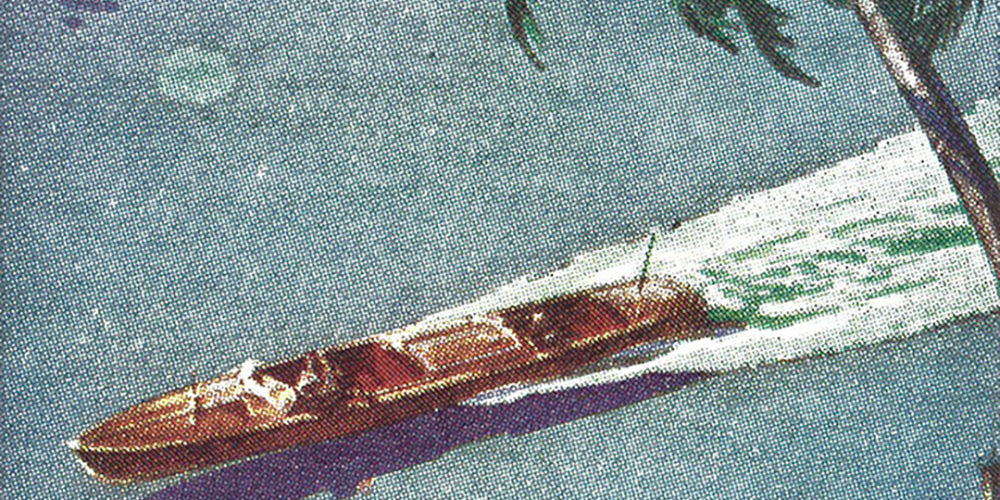

Wooden Motor Boats of the Early 1920's Through the 1930’s
- 1930's Boats
- Dodge Boats
- Horace E. Dodge
- Horace E. Dodge Boat and Plane Corporation
In this technological age, many neglect to reference the “written word” found in books. When I started this business 30 years ago, the internet was in its infancy and in true form, the only access I had to the history of Motor Boats was by flipping pages in old “Motor Boating” and “Rudder" magazines. One day a colleague introduced me to a collection of books, authored by Bob Speltz, who amassed a unheard of collection of stories on Motor Boat manufacturers. I was fortunate enough to acquire a set of 7 Real Runabout (ISBN info Below) volumes and was satisfied I had come across the Holy Grail of reference. I spent countless hours devouring the details in these books and found myself focusing on those manufacturers that changed Motor boating forever.

- 16’ split cockpit with 40 hp @25mph.
- 21’6” split cockpit with 115hp @35mph
- 25’ triple cockpit with 125hp @32mph
- 25’ triple cockpit with 165hp@38mph
- 25’sedan with 165hp@34mph
- 28’ triple cockpit with 300hp@45mph
- 28’ Sedan with 300hp@38mph

1931 Dodge Restoration Story Here:
https://absoluteclassics.com/pages/the-story-of-a-1931-dodge
Real Runabouts - Book Series ISBN Link:
https://isbnsearch.org/search?s=the+real+runabouts

85 years of boating history
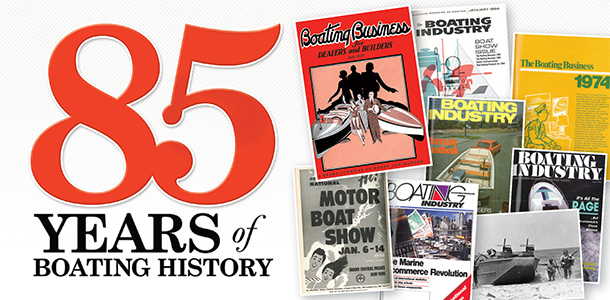
A look back at more than eight decades of the boating industry
It was 85 years ago this month that Boating Business was launched as “The Trade Journal of Boats and Motors.” The forerunner of Boating Industry was the first trade magazine for those in the industry — “the men whose bread and butter depend on their ability to sell boats and motors,” publisher James W. Peaslee wrote at the time.
Below we’ve picked out some highlights from the ensuing decades.
The first issue of Boating Business was published mere months before the October 1929 stock market crash. Despite the ensuing Great Depression, the late 1920s and 1930s were formative years for the industry we know today.
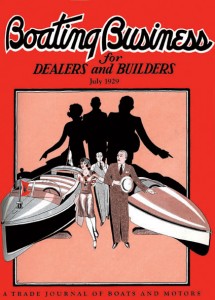
Mercury Marine was born in the 1930s when Carl Kiekhaefer started the Kiekhafer Corp. in Cedarburg, Wis., in 1939. The 1930s also saw the first boat shows in Los Angeles, Chicago and Dallas, to name just a few cities.
By 1932, signs of the depression were finding their way into the pages of the magazine, with boat and engine manufacturers promoting their new lower prices and articles with headlines like “Is the slump in your head?” For instance, Wild Ducks Inc. introduced the “Depression Boat,” with the promise of extra profits for its dealers. Chris-Craft announced its “Prosperity Program” of more support for its dealer network and a large national advertising campaign.
The May 1932 issue included an appeal to yacht owners, urging them to have work done on their vessels to combat unemployment. The appeal was part of the War Against Depression Campaign launched by The American Legion and American Federation of Labor.
While that campaign didn’t seem to take off, the boating industry did benefit from several other public works programs during that time, from the creation of the Lake of the Ozarks to numerous waterfront improvements included as part of recovery efforts.
While the country and boating industry wouldn’t really recover until World War II, the end of the decade saw signs of improvement, with boat builders announcing wage raises and increased production schedules. The Chicago Boat Show boasted attendance of more than 40,000 in 1939, a record for that show and “probably a record crowd for any boat show, anywhere in history.”
After Boating Business ceased publication in December 1937, founder James Peaslee (who had sold the magazine) relaunched it in January 1938 as The Boating Industry.
Although it began in 1939, World War II defined nearly every aspect of the 1940s, including the marine industry. After Pearl Harbor was bombed by the Japanese military on December 7, 1941, the United States threw itself and its resources into the war effort.
Sixteen million Americans joined the fight, critical resources were rationed and factories were converted to producing armaments, vehicles, and everything needed to battle the Axis powers. This massive build-up quickly pulled America out of the Great Depression, and most of the marine industry turned its attention to building boats for the U.S. military. At one point, General Eisenhower requested that Nautique build 400 boats in fifteen days — far more than the company ever produced in such a timeframe. The 1940s saw more changes sweep across the globe than any previous or subsequent decade in history.
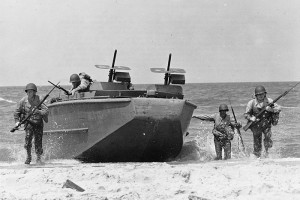
Following the homecoming of U.S. troops, boat shows restarted as boat builders and accessory makers began to revert back to civilian production. The following years saw a transition back to normalcy accompanied by a boom in childbirths, industrial expansion and consumer spending.
Resources remained scarce, including an aluminum shortage that forced Aluma Craft to limit its production in 1947. The Miami Boat Show, first held in 1941, resumed in 1947. Chris-Craft purchased a plant in Chattanooga, Tenn., near the Tennessee River, which was reshaped by the 12 hydroelectric projects of Tennessee Valley Authority.
As the 1940s drew to a close, the United States became the factory of the world, and boating usage and profits surged along with the growth in the consumer economy.
OMC announced a $5.7 million increase in sales in the May 1947 issue of Boating Industry. In 1948, the Coast Guard reported that the number of registered motorboats in the U.S. reached 440,000 with an upward trajectory.
The 1940s had changed the world order, and the marine industry thrived with exploding sales, new companies entering the business and technological innovations that made boating easier, more fun and available to a wider audience of Americans than ever before.
Like many U.S. industries, boating boomed in the post-war years. The GI Bill, rising middle class, baby boom and growing suburbs all played a role in the burgeoning marine industry.
In 1950, The Boating Industry reported that there were just less than 450,000 numbered (registered) motorboats in use. By 1959, the industry was selling that many boats in a year.

As the post-war restrictions were lifted, though, the industry achieved record growth. By the end of the decade, employees at boat builders and engine makers were working triple shifts five or six days a week to keep up with demand.
In recognition of the 50th anniversary of the recreational boating industry in 1954, The Boating Industry conducted a reader survey. In that survey, 96 percent of respondents said boating was “on in the increase” in their area, with the average reader reporting a 30 percent increase in business over the previous year.
Boat shows continued to grow and the decade saw the first Fort Lauderdale Sports & Boat Show, while in 1953 the Miami Boat Show became “International” for the first time.
In 1954, the American Boat & Yacht Council held its first meeting in New York City, with Phelps Ingersoll elected as president. It described its mission “to develop and make available recommended practices and engineering standards for improving and promoting the design, construction, equipage and maintenance of small craft with reference to their safety.”
Two of the iconic brands in the industry were also created in the 1950s. In 1955, J. Orid Edson founded Advanced Outboard Marine, the company that would become Bayliner after he paid $100 to acquire the name from another company in 1960. And in 1959, Sea Ray was born when C.N. Ray founded the company in Detroit.
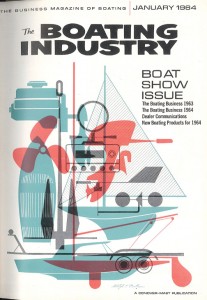
At the decade’s dawn, the U.S. was in a 10-month recession that preceded a massive cycle of prosperity. For the January 1960 issue, The Boating Industry ran a special issue that included boating statistics put together in concert with the National Association of Engine & Boat Manufacturers and the Statistical Research Department of the Outboard Boating Club of America.
As of 1960, boating was the nation’s top family sport with 39 million Americans participating and $2,475,000,000 spent at the retail level. After boat sales steadily and strongly increased throughout the 50s, there were 3,900 marinas and boat yards in the U.S., 1,100 yacht and boat clubs and 7,800,000 recreational craft on all waterways in the country. Other stats included 5,845,000 outboards in use, and 329,000 new outboard boats sold during the previous year.
According to the Outboard Boating Club of America, New York lead the way in outboard boat use with 527,000 outboards in use at the close of 1959. Michigan came in second place with 424,000, followed by California in third place with 388,000 outboards in use.
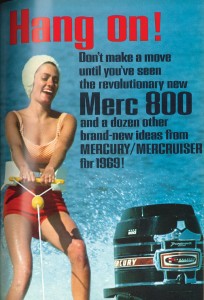
Brunswick entered the marine industry in 1960 with its purchase of Owen Yachts. In 1961, Brunswick added the Kiekhaefer Corp., builder of the Mercury engine. Other major marine landmarks include the introduction of MerCruiser and its first production sterndrive with more than 100 horsepower, Chris-Craft expanding beyond 10 factories and 5,000 employees, Honda building the first mass-produced four-stroke in 1964 and its first American outboard in 1967, and the Ski Nautique brand reborn with the introduction of a $4,500 boat-trailer combo.
Volvo’s Pentaverken changed its name to AB Volvo Penta in 1965 as marine engine sales grew and the company opened subsidiaries in England, Germany and Italy.
Meanwhile, OMC began overseas production in Brugge, Belgium, introduced four computer-driven sterndrive maintenance schools, entered the snowmobile market in 1964 and, by 1969, saw its annual sales exceed $327 million.
Hurricanes Betsy and Camille were major Gulf Coast disasters that roared ashore in 1964 and 1969.
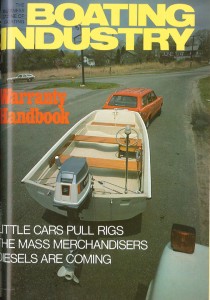
With articles like “Selling in an Uncertain Business Environment” and “Our Uncertain Economy: What Does it Mean to You?” the industry was trying to regain its footing. It’s a pattern that has become all too familiar for the last 40 years.
In 1970, one of the big names in the industry went back out on his own as E.C. Kiekhaefer resigned as president of Mercury and founded Kiekhaefer Aeromarine Motors Inc. He had founded Mercury in 1939 and had stayed on after its acquisition by Brunswick Corp.
There was an increased focus on energy efficiency during the decade, as a series of oil embargoes and gas shortages affected the industry. Most issues of the magazine featured an “Energy Bulletin” and the industry had to withstand attacks on its perceived lack of energy efficiency. The Boating Industry Association and National Association of Engine & Boat created a “Boating Energy Conservation Kit” that dealers could use to promote the “positive values of boating in a fuel-conscious society.”
A new wave of watercraft hit the scene in the 1970s as well, with Kawasaki introducing its first U.S. PWC in 1973. Although Bombardier Recreational Products had introduced a personal watercraft in the late 1960s, it didn’t sell well and the company quickly left the market. It wasn’t until the Jet Ski that PWC became commercially successful.

Then, in 1979, the National Marine Manufacturers Association was formed when the Boating Industry Association and the National Association of Engine & Boat Manufacturers merged after 12 years of negotiations. The merger would help the industry “move forward with a single voice and effort to become more valuable than ever before,” the officers of the new association said.
Boating Industry founder James Peaslee passed away in 1970, and in 1977, the magazine dropped the “The” and became simply Boating Industry.
In the wake of rising energy prices, unemployment and inflation in the 1970s, the 80s began on rocky shores with two back-to-back recessions. The challenging economic times resulted in bloated inventories, laid-off workers and consumers that were too skittish to invest in a new boat.
Boating Industry reported in 1980 that all eyes were on the Middle East with gasoline topping $1 a gallon.
Major events included the botched U.S. hostage rescue in Iran, the eruption of Mount St. Helens, IBM’s first PC, the assassination of John Lennon, and unsuccessful assassination attempts on the Pope and President Reagan. On the bright side, Pac-Man was released in 1980.
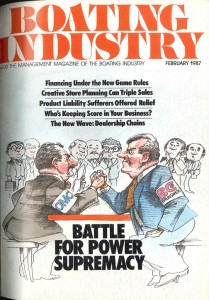
The federal government did the industry no favors in the early 80s, either, as the Department of Energy presented plans to ban weekend boating in an effort to save gasoline. The industry organized significant write-in campaigns to protest the ban, which was later scuttled. The DOE’s threats were linked to OMC’s sales falling $54 million in one year.
The recently formed NMMA also launched a promotional campaign telling the economic story of boating, which employed 700,000 people at the time. Chrysler sold its boatbuilding division to Texas International in 1980.
New York-based AMF stumbled after several failed investments contributed to the company’s losing millions by the year in the early 1980s. Minnesota-based investor, Irwin Jacobs, took over the company in 1985.
Sea Ray and Bayliner became part of Brunswick in 1986, making it the world’s largest producer of marine engines and boats — twice the size of its next largest competitor.
Volvo Penta became an independent subsidiary of the Volvo Group in 1982, as the company increased product launches and product development throughout the decade — notably including the introduction of the Duoprop sterndrive.
A team of investors, including George Dale Murray, purchased Chris-Craft’s boat division in 1981. In 1984 — the same year Yamaha entered the U.S. outboard market — Chris-Craft re-entered powerboat racing with the 300 Chris-Cat catamarans. The following year, Miami Vice character Sonny Crockett appeared aboard a Chris-Craft 390X Stinger, showing America the company’s next generation of performance boats. Chris-Craft parent, Murray Industries, was purchased by OMC in late 1989.
Technological improvements set the stage for industry recovery that picked up as the decade progressed. Mercury brought electronic fuel injection to the industry with the Laser XRi and Mariner Magnum EFI.
The boating industry was in dire straits as the 1990s started. A crippling luxury tax was passed by Congress in 1990, levying a 10-percent federal tax on boats costing more than $100,000. The early-1990s recession provided a one-two punch that resulted in dozens of bankruptcies and thousands of employees losing their jobs before the tax was finally repealed in 1993.
The industry’s giants were especially hard hit. In 1990, Brunswick closed five plants and laid off nearly 1,000 employees, while Genmar closed two factories. OMC closed more than a dozen plants in the early 1990s. Carolina Skiff, Carver, Ranger, Trojan and Sabre were just some of the brands that went in and out of bankruptcy.
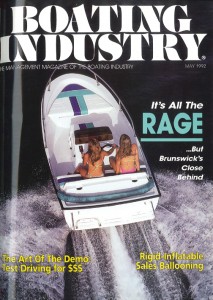
Overall, the industry went from employing 600,000 in 1988 to 400,000 in 1992. It was estimated that the average boat price dropped by as much as 50 percent. Sales of boats more than $100,000 dropped by 77 percent, estimated the Marine Retailers Association of America. Boat sales nationally dropped by more than 40 percent from $17 billion in 1989 to $10 billion in 1992.
The luxury tax led to an increased focus on Washington by industry associations and the Congressional Boating Caucus was formed as a formal, bipartisan body to focus on boating issues.
Proving the old adage that there are no new ideas, in 1992 Boating Industry covered the surging jet boat market. Boston Whaler’s 13 ½-foot Rage was generating excitement with more than 450 units shipped, with competition on the horizon from Bayliner, Sea Ray, Yamaha and Sea-Doo.
In other significant events during the 1990s, Textron entered floorplan financing, where it would become a major player until the Great Recession and one of the leading pontoon manufacturers was founded when former Forrester president Bob Menne and dealer Gene Hallberg announced their plans to form Premier Marine. Honda, although it had been selling product in the United States for several years, formed its U.S. marine division, Cummins Diesel formed a marine engine division and Yanmar began building engines in the United States.
Most of the industry recovered in the wake of the tax repeal, with some exceptions. Most notably, OMC continued to struggle, losing market share to other boat and engine manufacturers. In 1996, OMC announced it was considering leaving the boat-building business, although it later reversed course. After saying in 1997 that it was seeking new investors and merger partners after posting large losses for several years, it was acquired by Greenmarine Acquisition Corp., a company affiliated with George Soros. All of that turmoil, of course, foreshadowed the company’s massive bankruptcy in 2000.
Few decades in American history began as rosy as the 2000s. After the worst of the Asian financial crisis receded, a roaring U.S. economy brought the unemployment rate below 4 percent as investors marched headlong into the Internet bubble that inflated the stock market.
Bucking the positive economic trends, OMC filed for bankruptcy and laid off its 7,000 employees. Bombardier Recreational Production and Minnesota-based Genmar jointly purchased Johnson and Evinrude at auction for $95 million.
Signs of economic weakness appeared across the globe in early 2001, as tensions in the Middle East rose after Israel and Palestine resumed clashes and the U.S. attempted to restart peace talks.

What follows is fairly recent, painful history: ongoing wars in the Middle East, the explosion of Space Shuttle Columbia in 2003, the Indian Ocean earthquake and tsunami in 2004, Hurricane Katrina and its effects on energy prices in 2005, and the financial crisis that began in 2007.
The Great Recession brought unprecedented turmoil to the marine industry as credit dried up, scores lost their jobs, discretionary purchases ground to a halt and many dealers and boat builders struggled to keep the lights on. As annual boat sales fell by more than half, many boat builders large and small shut down, and dealerships — possibly 40 percent of all U.S. dealers— were forced to close their doors.
Genmar Holdings filed for bankruptcy in 2009, and Platinum Equity purchased much of the company, including the Ranger, Glastron and Four Winns brands under the umbrella of its Rec Boat Holdings and Fishing Holding subsidiaries. Irwin Jacobs later reemerged with a partner to purchase Larson Boats in 2010.
At Brunswick, Dustan McCoy was named CEO in 2005, and the company acquired 13 boat brands, nearly doubling the size of its boat group.
Technological innovation helped pull the industry out of its deep funk as the economy gradually improved. Mercury introduced Digital Throttle & Shift Control in 2000 and the FourStroke Verado outboard in 2004. Nautique delivered its SportShift and Hydro-Gate wake technologies, celebrated its 80th anniversary and built a new 217,000-square foot plant in central Florida.
As sterndrive sales remained in the doldrums, pontoons and outboard-powered boats in general became more popular. Although BRP exited the jet boat market with its Sea-Doo brand in 2012, several companies including Rec Boat Holdings (Scarab) and Marine Products Corporation announced plans to enter the jet boat market.
Share this:
- Click to share on Facebook (Opens in new window)
- Click to share on Twitter (Opens in new window)
- Click to share on LinkedIn (Opens in new window)
- Click to share on Reddit (Opens in new window)
- Click to share on Tumblr (Opens in new window)
Related Articles

Boating Industry calls for 2024 Top Products submissions

2023 Top 100 Dealer of the Year: Regal & Nautique of Orlando

2023 Top Dealers: Best in Class
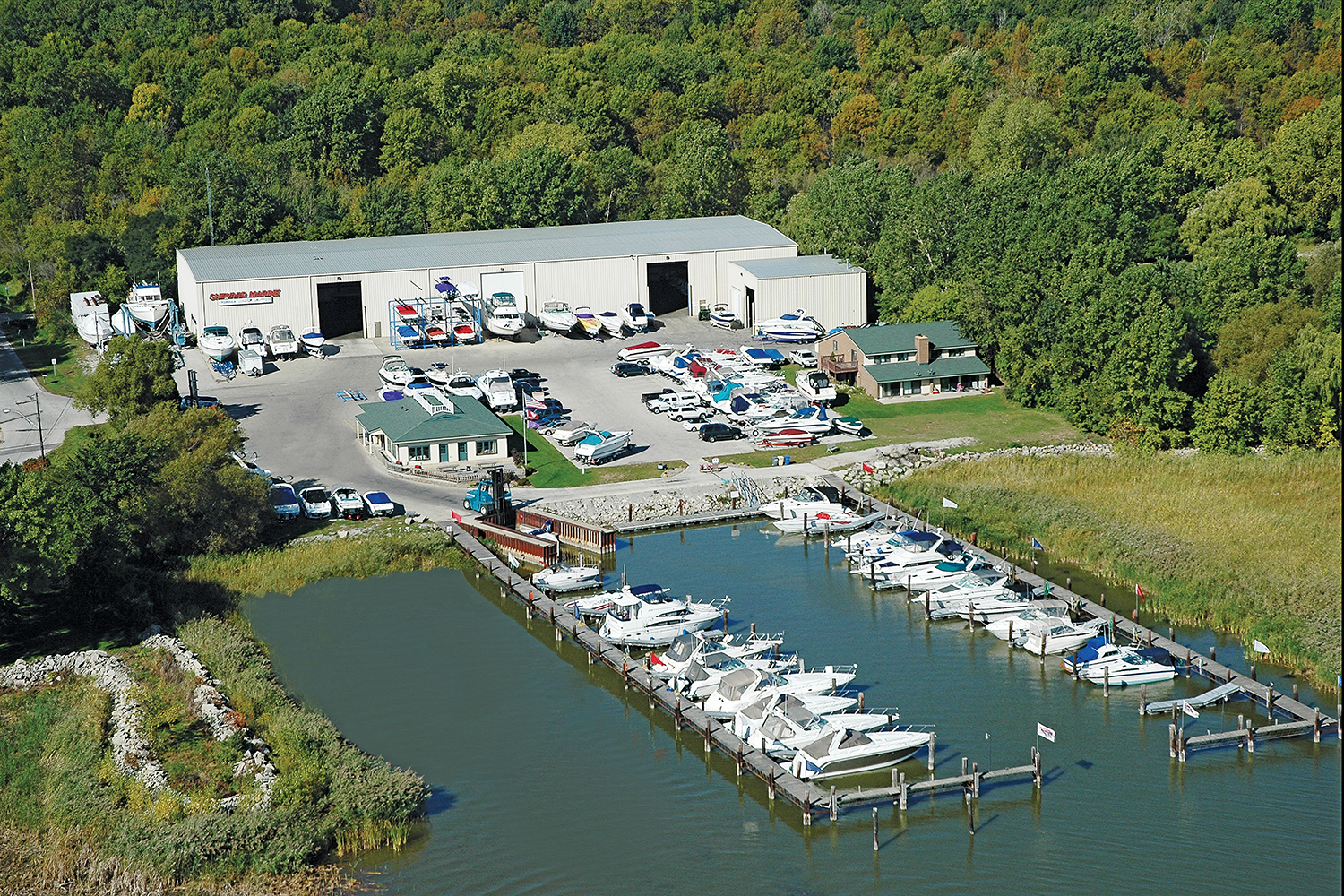
2023 Editor’s Choice: Marine 365
I would like to subscribe as I was the former owner of Typhoon marine boats in Florida as well as Hudson Bay Inflatables. My Father owned Mac’s outboard service through out the 56s and 70s.
Hi Mac, To fill out a subscription, please click this link: http://epgmediallc.com/subscribe/boating-industry/ and enter the required information. Thank you for your interest in Boating Industry . Adam Quandt, Associate Editor
Leave a Reply Cancel reply
Your email address will not be published. Required fields are marked *
Save my name, email, and website in this browser for the next time I comment.
Boats for Sale & Yachts
Classic motor yacht 1930 boats for sale & yachts, classic motor yacht boats review and specs.
Table of Contents
This Classic motor yacht MASCALZONE ASSAI was designed by G.L. Watson and built in 1930 by William Beardmore in Glasgow. This vessel was been refitted between 2002 and 2003. Her interior is wonderfully sophisticated and elegant, the staterooms are furnished in exquisitely classical yachting style and complete with every imaginable comfort. The quality of craftsmanship throughout is excellent and the interior atmosphere is warm and welcoming. The saloon and guest accommodation are fully air-conditioned.
Contact Information
Classic Motor Boats for Sale Craigslist & Classic Motor Specs & Pictures
Related posts:.
- William Beardmore 1930
- Beardmore William Classic Displacement Yacht 1930
- Jakobsen & Peterson Motor Yacht 1930
- DEFOE BOAT and MOTOR WORKS 1930 1930
This entry was posted filed under All Boats . You can follow any responses to this entry through the RSS 2.0 feed. You can skip to the end and leave a response. Pinging is currently not allowed.
- Build A Boat
- Find A Dealer

- The History of Recreational Boating

Today it’s common to see roads, docks and marinas bustling with people taking their family, friends and boats out for an afternoon on the water. Many enjoy anything from snacks to a full dinner and drinks in the comfort of their boat as they take a break from water skiing, swimming, fishing, racing or sailing. While it’s an investment for us to purchase from the boating industry, the history of boating shows us that boats are much more accessible now than they were in the past.
The beginnings of ancient boating can be traced back to pre-history, however, at that time boats were primarily used for work. Using boats for pleasure — what we know as the recreational boating industry — didn’t develop until much later. When recreational boating began, it was a sport for kings and the socially elite. The industry has quite a history.
Many accounts claim the history of boating for sport can be traced back to the 1600s — and once the United States was formed much of the boating industry has risen and fallen with key points of American history.
History of Recreational Boating
The earliest history of recreational boating begins with kings and royal regattas on the Thames River in the mid-1600s. Charles II of England is recognized by many as the world’s first yachtsman. Before he took the throne in 1660, he spent ten years in exile in Holland. When he returned home to take the throne, he was welcomed with a generous gift of a yacht and a crew. King Charles II spent time sailing on the Thames. You might say he was a serious recreational boater — many historians estimate he went on to build 20 yachts throughout his life.
His passion for pleasure boats sparked interest from many others, and can likely be traced to another monumental point in pleasure boat history — the first sailing club. Imagine a time without marinas or boat clubs. While boating became an activity enjoyed by many of the elite members of society, there was no formal space for them to gather. Eventually, in the early 1700s, many of these yachtsmen came together and formed the first sailing club in the world — a significant part of the history of sailing.
What was the name of the first boaters’ club? Many believe it was The Water Club of the Harbour of Cork on the southern coast of Ireland — however, others claim the Neva Yacht Club in Russia was first. Either way, this was a key point in the history of recreational boating. Shifting the focus to domestic history, in the United States, the first boating club was founded in 1839 in Detroit, followed just six years later by one in New York.
Up until this point in history, boating was synonymous with sailing or rowing. It was a lot of work — and much of the work was done by a crew hired by the wealthy individual who owned the boat. But all of that changed in the late 1800s when Gottlieb Daimler, a German engineer and inventor, created an improved version of the internal combustion engine — not only for automobiles but boats, too. This engine completely revolutionized the industry, as it took a lot of the hard work — or the need to hire a crew to do the hard work — out of boating.
Of course, with motorboats come racing. In 1903, the world came together for the first international motorboat race of its kind, the Harmsworth Cup, formally known as the British International Trophy for Motorboats. An Englishman won, racing his motorboat at a speed of 19.5 miles per hour.
By 1910, outboard motors were manufactured, making it possible for boaters to put the engine on their boat, remove it for service or transportation, and then reattach it or attach it to another boat. This new versatility led to making recreational boating more accessible and economical to the public.
Just a few years later, the recreational boating industry sped up when American inventor John L. Hacker created a boat known as the Kitty Hawk. For those who recognize the name — yes, he knew the Wright Brothers. This cutting-edge boat became the first boat to travel at a speed of 50 miles per hour.
Modern History of Recreational Boating

1920S AND 1930S — BOATING INDUSTRY BEGINS TO ORGANIZE
The National Outboard Association and the Marine Trade Association were both created. The merger of a few companies in the outboard motor business come together to form the Outboard Motors Corporation. Despite these marine organizations and businesses forming, pleasure boats were still primarily for the wealthy. There are a few big reasons why — the Great Depression had a significant impact on the economy, and these boats weren’t being mass-produced yet. So, the industry was made up of expensive, mostly custom-built, mahogany-hulled runabout models with larger engines.
This is also just after the “Big Three” automobile companies emerged, and the sale of automobiles began. Many who may have wanted a boat couldn’t transport it, as the automobile industry was beginning to take off.
1940S — THE WAR AND INTRODUCTION OF FIBERGLASS BOATS
For the first half of the 1940s, the industry was consumed with World War II. Resources were limited, and the boating industry was focused on building boats for the military. There wasn’t much time or money for recreational boating.
Perhaps due to the developments in military boats, the beginning of this decade is credited with introducing perfected fiberglass boats to the market in the United States. They were affordable, durable and low maintenance, making them a hit.
By the end of this decade, the economy began to return to normal — as it grew, so did boating usage and profits. The 1940s — both the good and the bad — shaped the industry and resulted in high sales, new companies entering the industry and technological advances that created a boating experience that was easier, more accessible and, many would argue, more fun.
1950S — BOATING INDUSTRY BOOMS
The boating industry boomed, like many other industries, after the war. To give some perspective on just how big the boom was — in 1950 The Boating Industry reported there were just under 450,000 registered motorboats in use. By 1959, the industry was selling that many boats in just one year. The challenge for the boating industry became keeping up with consumer demand — from a workforce and supplies standpoint.
Up until now, hulls had been made of wood or metal — now fiberglass hulls became more common. Volvo released the first sterndrive of its kind, known as the “Aquamatic.” Boats continued to evolve throughout this decade, showing off the newest features through an increased number of boat shows across the country. The first initiative of boating safety standards also began with the first meeting of the American Boat and Yacht Council with a mission to “to develop and make available recommended practices and engineering standards for improving and promoting the design, construction, equipage and maintenance of small craft concerning their safety.”
Thunderbird, one of the companies that would grow to be a part of Formula Boats, was founded in 1956. Two years later, Vic Porter — from the same Porter family that owns Formula Boats today — began building and selling small fiberglass runabouts under the business name Duo, Inc.
1960S — BOATING BECOMES THE TOP FAMILY SPORT
Despite a dip in the economy at the end of the 1950s, the January 1960 issue of The Boating Industry cites boating as the nation’s top family sport. Boat engines continued to improve. Shortly after Volvo’s introduction of the “Aquamatic,” Mercury introduced the MerCruiser engine. Modern versions of both of these engines are a part of many Formula Boats today. Here began a competition for market share that continues to this day.
Production thrived, expanding overseas. Honda built the first mass-produced four-stroke engine. Innovation continued as Ski Nautique introduced the boat-trailer combo.
1970S — WAVES IN SPEED AND ENERGY
Believe it or not, the world record for the fastest boat was set at 317.58 miles per hour in 1977 and has yet to be broken. At the same time, concerns about energy efficiency began to rise, partially as a result of rising gasoline prices, leading to some negative perceptions about a lack of energy efficiency. Perhaps as a result of the focus on energy efficiency, a new, smaller watercraft known as the Kawasaki Jet Ski entered the market and became the first commercially successful personal watercraft.
Two important industry associations were created — the Marine Retailers Association of America, with more than 50 boat dealers represented, and the National Marine Manufacturers Association (NMMA), formed by the merger of two previous associations. Both of these marine associations showed continued interest in improving the industry as a whole through professionalism and best practices. Associations helped the industry in the midst of the negative energy efficiency attacks by providing “Boating Energy Conservation Kits” for dealers to use in promoting boats in this new energy sensitive society.
1980S — BOATING INDUSTRY FACES CHALLENGES
Energy prices didn’t get any better — in fact, they continued to rise in the early 1980s. Unemployment and inflation were also high, leading to a challenging economy for recreational boating. The federal government only made things worse when the Department of Energy discussed a new initiative to save gasoline — ban weekend boating.
At the time the outlook seemed so dim that in 1980 NMMA Executive Vice President Frank Scalpone said, “This year is pretty much beyond redemption for most of the companies. It will probably be one of the worst years ever.” In an attempt to help the industry, the NMMA launched a campaign to share the story of boating from an economic standpoint — at the time, the industry was responsible for 700,000 people .
The financial hit to the industry translated to cuts and mergers. Chrysler sold its boat manufacturing division while Sea Ray and Bayliner merged with Brunswick, becoming the world’s largest boat and boat engine manufacturer. Fortunately, it wasn’t all bad. Volvo created new products as well as an independent subsidiary dedicated to the cause — Volvo Penta. Yamaha became a player in the outboard market. Chris-Craft catamarans got back in the powerboat racing market — eventually becoming a part of Outboard Motors Corporation. Mercury introduced cutting-edge technology — electric fuel injection.
1990S — EYES ON WASHINGTON
Despite the few silver linings to the state of the industry in the 1980s, the impact was devastating. Estimates showed the price of boats being cut in half — sales were even worse. According to the Marine Retailers Association of America, of the boats sold with a price tag of over $100,000, sales dropped 77 percent.
The federal government was yet another cause of the industry getting off to a slow start in the early 1990s when it passed a luxury tax — if you paid more than $100,000 for a boat, you were charged an additional tax of ten percent. Thankfully, the tax was repealed in 1993, but not before several bankruptcies were filed and countless jobs were lost. The boating industry had its eyes set on Washington, which led to the creation of the Congressional Boating Caucus — a bipartisan group that would concentrate on boating issues in government.
Again, the end of this decade found the boating industry climbing back, slowly but surely, from a significant hit. The jet boat market began to surge, and jobs began to return to the United States.
2000S — ECONOMIC TURMOIL CAUSES A DOWNWARD SPIRAL
While the 2000s began strong, the global economy began to weaken as the political unrest in the Middle East grew, and the World Trade Center was attacked on September 11. War broke out, natural disasters struck and the economy took a turn downward.
Despite the negative shifts, in 2005, 12.94 million registered recreational boating vessels were recorded — the highest in history. Unfortunately, the early downward spiral at the beginning of the decade only led to more suffering for the economy in the late 2000s, and it had quite an impact on the boating industry. Jobs were lost, so was available credit. Consumer spending plummeted, and any unnecessary spending was cut — as a result, boat manufacturers and dealers struggled. At one point, Boating Industry Magazine estimates that possibly 40 percent of all United States dealers closed their doors.
On a brighter note, the 2000s was a busy decade in Formula Boats history — our boats won the Mercury Constructor’s Cup, twice. Several of our boats were recognized, and our 240 Bowrider was named Powerboat Magazine’s Boat of the Year. We also introduced our first luxury yacht and expanded our manufacturing plant.
Recreational Boating Today — On the Rise

Today it’s clear to see how far the evolution of the history of boating has brought us. The 2016 Recreational Boating Participation Study showed that an estimated 142 million Americans went boating in 2016 — that’s 36 percent of households in the United States. The majority of them — 62 percent — have household incomes under $100,000. The average age an individual has their first boating experience is 12 years old. We’ve come a long way from the early history of recreational boating when it was meant for kings and society’s elite.
The industry continues to grow and shows no sign of stopping. In 2017, 11.96 million recreational boating vessels were registered in the United States — higher than the previous three years. The total value of recreational boats sold in the United States hit a new record of almost four billion dollars . The NMMA has projected that the industry growth will continue through 2018.
Contact Formula Boats
As the recreational boating industry has continued to grow and evolve throughout history, Formula Boats history has continued to do the same — keeping up with new trends by focusing on giving individuals the ability to build their dream boat. If you’re interested in learning more about Formula Boats or in building your boat with us, please contact us .

Contact Dealer
This site is protected by reCAPTCHA and the Google Privacy Policy and Terms of Service apply
Business & Finance: 1930 Motorboats
- StumbleUpon
- Del.i.cious
In summer, swift motorboats cleave both Manhattan's broad grey Hudson River and narrow, oily East River. But unusual is the sight that Manhattanites had last weeka tarpaulin-covered motorboat left all night on a truck at a Park Avenue corner. Many another night and all day many another glistening, rivet-new motorboat was being carted through the streets. Gapers who followed these land-hauled boats found they were bound for Grand Central Palace, there to bask in blue and silver brilliance for the 25th (Silver Anniversary) New York Motorboat Show.
Want the full story?
Learn more about the benefits of being a TIME subscriber
If you are already a subscriber sign up — registration is free!
Sign In adFactory.getCmAd(142, 70, "upgradetop", "text").write();
If you check the "Remember me" box, you will be automatically signed in for 30 days to TIME.com when you visit in the future.
If you are accessing TIME.com on a public computer, you are advised not to click on the "Remember me" option.
For more information, please visit TIME's Privacy Policy
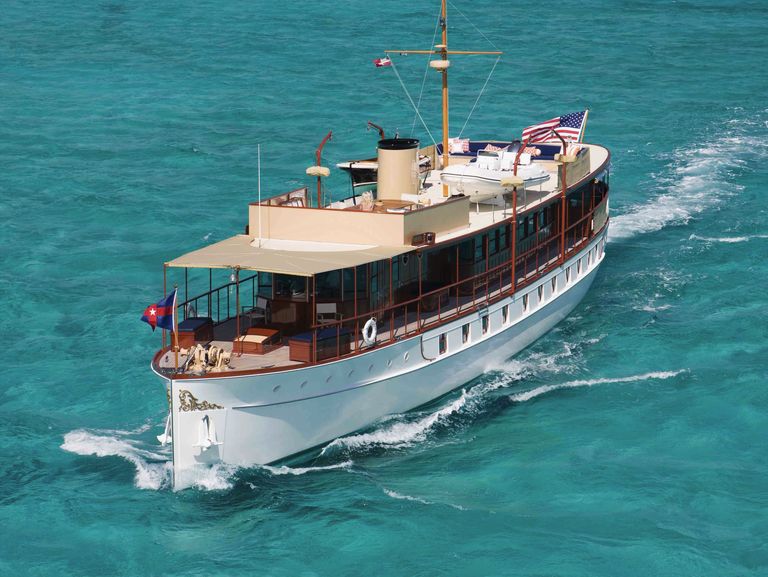
An Historic Mathis-Trumpy Yacht Makes Her Daring Return
The 1920s Freedom is restored to her original splendor, recalling the lavish era of classic motor yachts.
She must have been irresistible. What wasn’t to adore along the 104 feet of this regal watercraft? To Jessie Woolworth Donahue, daughter of retail magnate F.W. Woolworth and then one of prewar America’s wealthiest women, the vessel was indeed perfect. A slender beam ideal for gliding the intracoastal waters surrounding her Palm Beach house. A plumb bow that rose straight up from the waterline like the aquiline forehead of an aristocrat. A divinely proportioned counter stern with an elliptical fantail that curved gently up and aft with the grace of a ballerina’s gesture. Bronze scrollwork that glowed in the sun. A low, sturdy stack nestled alongside one heaven-reaching, raked mast. Behind, the romance of sail. Ahead, the power and promise of engines.
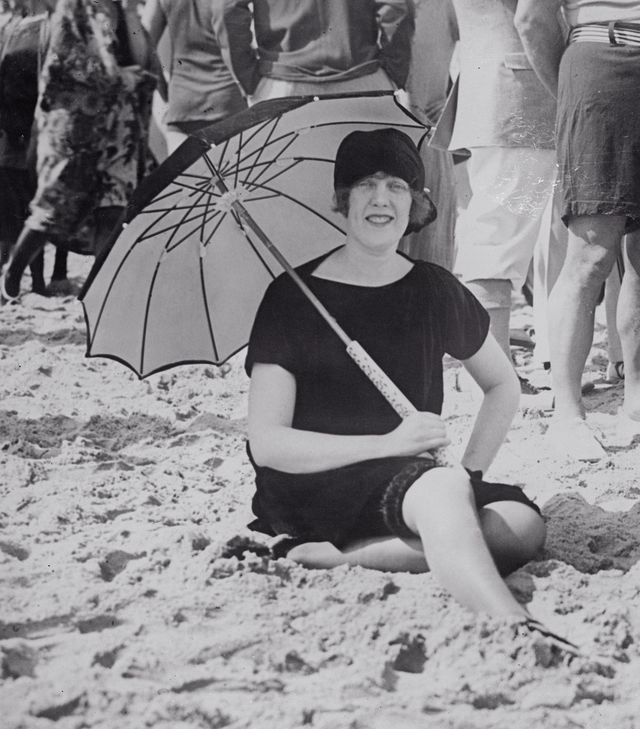
And within, the ultimate expression of how one lived: a trio of expansive double staterooms (plus one single), three baths, lounging and dining saloons (with mahogany walls, beams, and deckhouse), and interiors decorated in grand style by famed retailer Wanamaker (the decor alone was advertised to have cost $30,000). Irresistible.
Wealth. Opulence. Assurance. And perhaps most symbolically, a signal of one’s freedom to roam from enclave to enclave, from season to season, in high luxury. Sold, then, was the 1926 Mathis-Trumpy Freedom to Donahue. She was, of course, a member of the Gilded Age class that commissioned or acquired yachts with the same alacrity they built mansions and seized the goldenmost layer of the American dream.
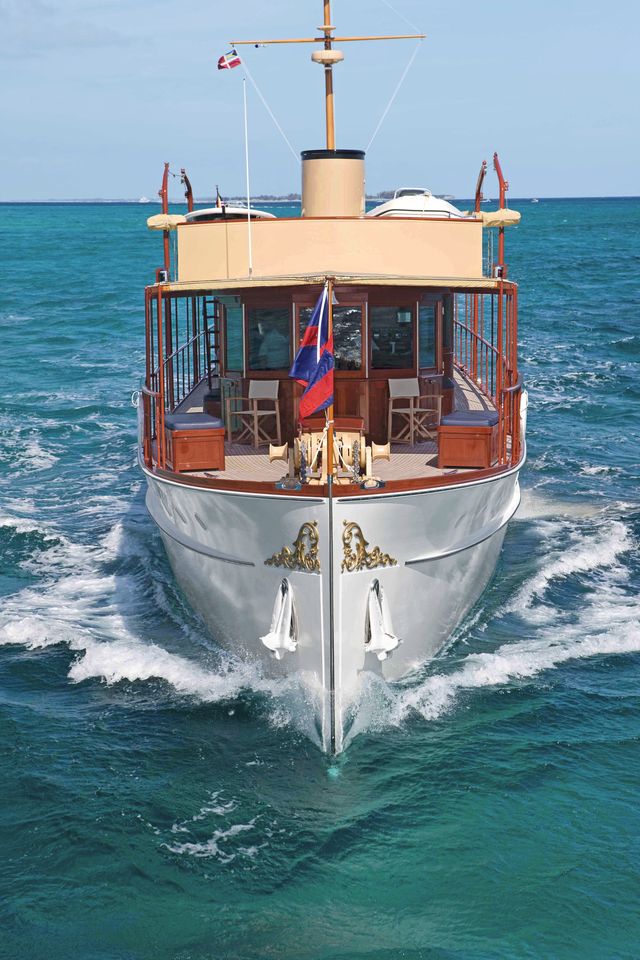
“In these days, newly minted millionaires had their list of things to acquire, to check the box to be a proper millionaire,” says Earl McMillen III, a Newport, Rhode Island–based yacht restorer and de facto historian of the period. “You’d have a house in Palm Beach, Newport, or Bar Harbor in the summer,” he continues, “a shooting plantation in South Carolina or Georgia, and on that list was a proper yacht. It was a lifestyle that everyone saw.”
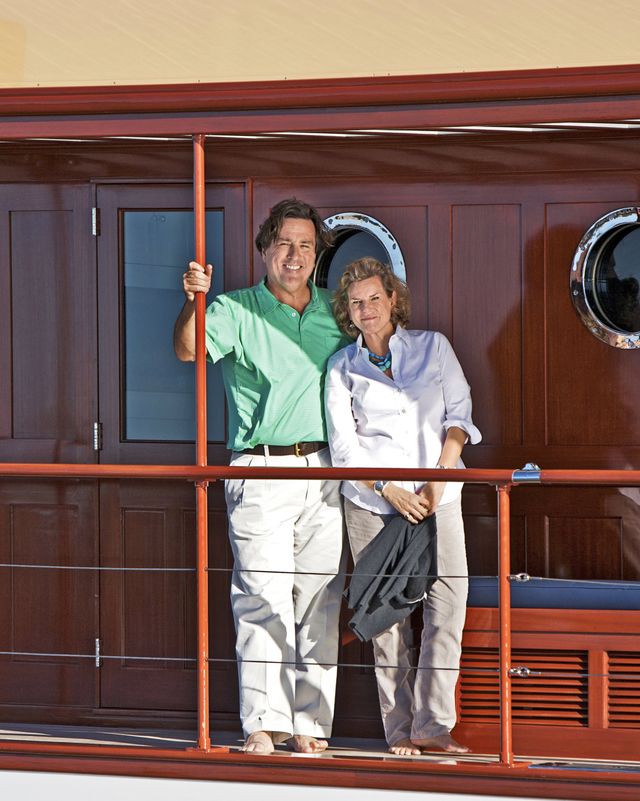
This maritime striving, according to author Ross MacTaggart, spawned a century’s worth of high-profile boats. The wave began in 1830, he notes, with an Englishman who commissioned the first known motor yacht: the steam-driven Menai, complete with paddle wheels that made her look like a hybrid of a submarine and a Mississippi riverboat.
While the design may have seemed maladroit, the outcome was profound: “For the first time,” MacTaggart writes in his book Millionaires, Mansions, and Motor Yachts, “an individual could control his or her vessel’s schedule.” No waiting for tides, currents, winds. And while the late 1800s saw the addition of luxury rail travel, the promise was more confined than the private yacht: “A millionaire still had to accept the fact that trains went where they could, not where you wanted,” MacTaggart writes. “What was the point of being a millionaire if one could not do whatever one wanted, whenever and wherever? And comfortably?”
Yachting's Gilded Giants
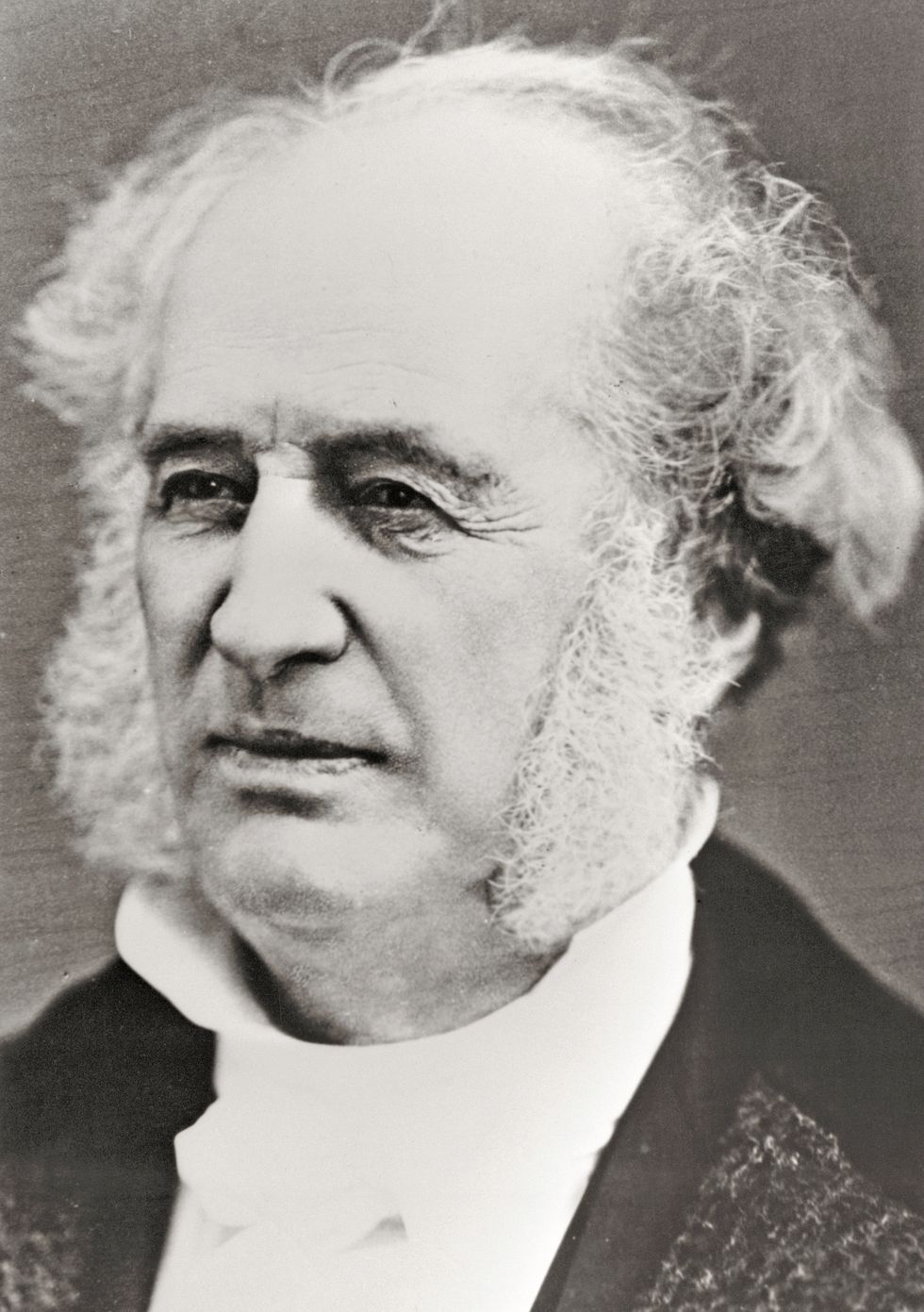
As the 20th century opened, and as industrialists and other millionaires like Cornelius Vanderbilt, J.P. Morgan, their offspring, and rising nouveau riche joined the elite rosters, naval architects strove to create vessels that matched those aspirations. Private motor yachts diversified: some built for ocean-going explorations, others—like Freedom— for cruising protected waters along the Eastern seaboard, and others still for speedy commuting from one’s estate, say, on Long Island to the New York Yacht Club’s dock at 26th Street on the East River. The costs to build these crafts (in the millions of dollars at the time), not to mention maintain them—all the way down the ledger to stylish nautical dress for every crew member—were monumental.
.css-ddas4j{color:#0A0736;font-family:BodoniBold,BodoniBold-roboto,BodoniBold-local,Georgia,Serif;font-size:1.625rem;line-height:1.2;margin:0rem;text-transform:lowercase;}@media(max-width: 48rem){.css-ddas4j{font-size:2rem;line-height:1.1;}}@media(min-width: 48rem){.css-ddas4j{font-size:2.375rem;line-height:1.1;}}@media(min-width: 64rem){.css-ddas4j{font-size:2.375rem;line-height:1.1;}}.css-ddas4j b,.css-ddas4j strong{font-family:inherit;font-weight:bold;}.css-ddas4j em,.css-ddas4j i{font-style:italic;font-family:inherit;} “If you have to ask how much a yacht costs, you can’t afford one.” -Attributed to J.P. Morgan
And in the 1920s, many agree the form reached its design apogee. Designers like Jonah Trumpy were working at the peak of their craft, creating silhouettes of grace and proportion that carved their way elegantly through water and spaces throughout that matched those of mansions and country homes on land. It was a bright era that was snuffed out nearly entirely by the combined economic effects of the imposition of income tax in 1914 and the Depression thereafter, not to mention the rise in the use of automobiles, the improvement of roads, and finally, the new promise of air travel. As happens to all empires, the glory days of the great private yacht were closing.

But for McMillen, there were survivors to be found, restored, and relaunched. “If they’re lost, they’re lost forever,” he says, recounting how Freedom, in fact, nearly suffered that fate. From the hands of Mrs. Donahue, the houseboat (Trumpy’s term for his class of luxury yachts, whose interiors were emulations of all the comforts of home) had been sold in 1939 to a real estate developer in Florida who renamed her Sunset to promote his own Sunset Islands development near Miami. A succession of Florida owners followed, but by 2001, the craft was languishing in a warehouse in Jacksonville and slated for demolition. McMillen learned of the boat’s grim, looming fate from MacTaggart and moved quickly. He bought her for one hundred dollars and undertook the near-Herculean process to move her up the coast to his facilities in the greater Newport area (one of the nation’s centers of boatbuilding and restoration) and to raise the funds—$7.5 million—to restore her. In May of 2009, rebuilt painstakingly plank by plank, the yacht returned to service, thanks to a creative fractional ownership syndicate assembled by McMillen, and took her original name back. In 2010, Freedom won the World Superyacht Best Rebuilt award in London. “It’s the Oscars of the yachting industry,” McMillen says.
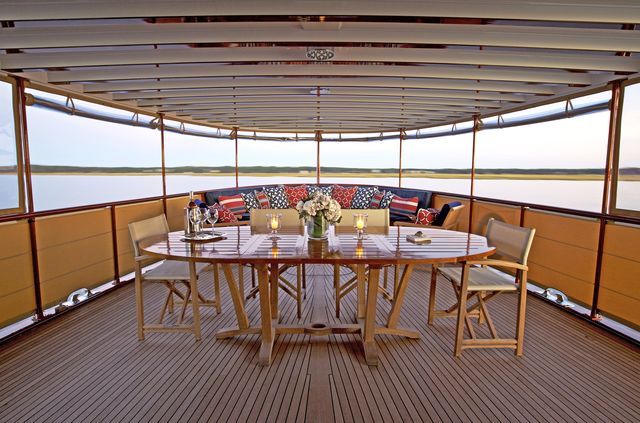
It’s no wonder. Brought back lovingly in full splendor, Freedom represents the very finest expression of the age and its aspirations. “Freedom was the most refined and finest-looking of the boats that [Trumpy] built,” he says. “The joinery, the details, the hardware…everything about her is sort of perfect in my opinion.”
McMillen laments a turn away from that balance and proportion among this generation’s newly minted billionaires. “Everything I see today, it’s glitzy and shiny and big, but you lose me there,” he says. “In my opinion, the billionaire of today is most interested in building bigger. They’ve lost sight of how to build a beautiful boat.”
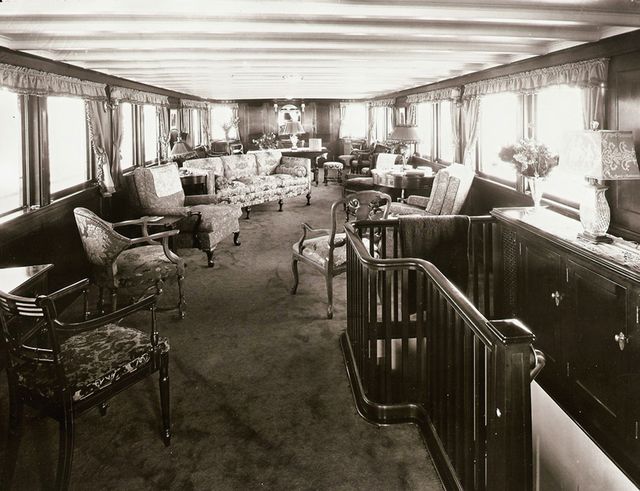
“These wooden boats are organic,” he says, returning to the crafts he loves like family. “You get a sense that they’re a living, breathing organism. They have almost a human-like attachment. There’s something about going to sea on a wooden boat.”
One might almost consider it irresistible.
Featured in our July/August 2019 issue.

The Ultimate Yachting Guide

A Yacht's Timeless Design Refresh
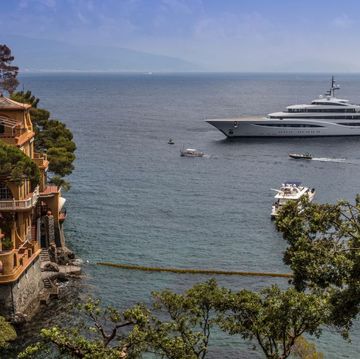
What To Wear on the Water This Summer
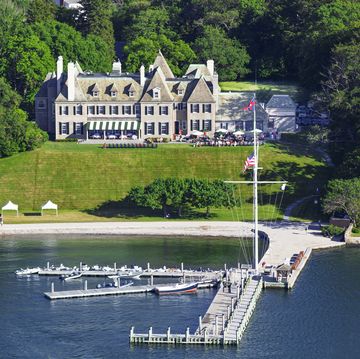
The World’s Most Beautiful Yacht Clubs
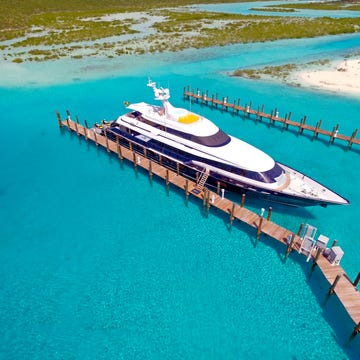
The Fastest Superyacht of Its Time
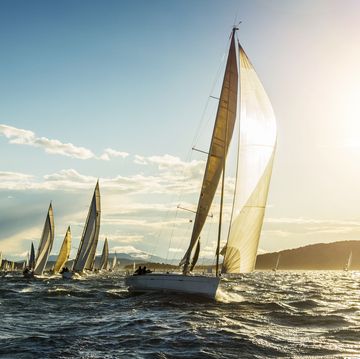
VERANDA Insiders' Guide to Yachting
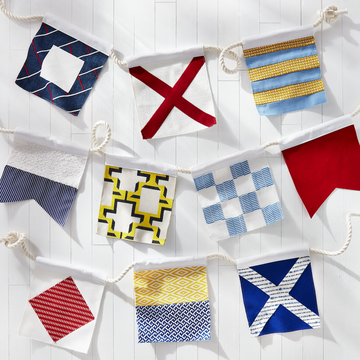
18 Outdoor Fabrics for Summer

7 Luxury Watch Brands Saving Our Oceans

Kate Middleton Has Been Diagnosed With Cancer

Inside Lady Rose Hanbury’s Houghton Hall Residence

The 15 Best Design Books to Buy in 2024

Meghan Markle Is Launching an Instagram Account
The Online Books Page
presents serial archive listings for
Motor Boating
Motor Boating was an American boating magazine published for most of its run by Hearst's Magazines.
Publication History
Motor Boating began in 1907 as The Motor Boating Magazine. The first actively copyright-renewed issue is February 1929 (v. 43 no. 2), © January 18, 1929. The first actively copyright-renewed contribution is from February 1957. ( More details ) It was renamed Motor Boating and Sailing in 1970, and MotorBoating in 2000. It ceased publication in 2011.
Persistent Archives of Complete Issues
- 1908-2011: Google Books has most of this magazine's run , by arrangement with the publisher.
- 1922: HathiTrust has volume 29 , covering January-June 1922.
This is a record of a major serial archive . This page is maintained for The Online Books Page . (See our criteria for listing serial archives .) This page has no affiliation with the serial or its publisher.
Help with reading books -- Report a bad link -- Suggest a new listing
Home -- Search -- New Listings -- Authors -- Titles -- Subjects -- Serials
Books -- News -- Features -- Archives -- The Inside Story
Edited by John Mark Ockerbloom (onlinebooks@pobox.upenn.edu) OBP copyrights and licenses .
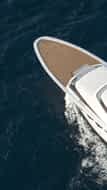
1st generation
Friedrich Lürßen

4th generation
Friedrich & Peter Lürßen

2nd generation
Otto & Frieda Lürßen

1st Generation
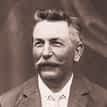
Friedrich Lürßen founds the company
After training as a boatbuilder, Friedrich Lürßen wants to join the boatyard of his father, Lüder Lürssen. Lüder advises his son to start a yard of his own – a single company would be insufficient to support two families. On June 27, 24-year-old Friedrich sets up a boatbuilding workshop in Aumund, near Bremen, Germany. His first vessel demonstrates his trademarks: originality and high quality. Friedrich Lürßen’s shipyard grows and thrives, and at one point he even begins placing orders with his father.

Reputation in racing rowboats
Lürssen initially only builds racing rowboats for Bremen oarsmen, but orders are increasingly coming in from all over Germany. The word spreads that Lürssen boats are not only beautifully designed, but also outstanding in precise workmanship and quality – and thanks to their lightweight construction, they are very fast and place well in regattas.

World’s first motorboat – a Lürssen
Lürssen builds the world’s first motorboat. The 6-meter REMS is commissioned by the inventor and engine manufacturer Gottlieb Daimler, who needs a boat to put his new engine through its paces. Friedrich Lürßen, always open to new ideas, designs and builds it without delay. The Daimler engine that powers it has a displacement of 0.462 litres, weighs 60 kilograms, and has an output 1.5 hp at 700 rpm.

Lürssen expands to the shoreline
The Lürssen yard is expanding and now includes a site in Bremen-Vegesack. For the first time the shipyard now has direct access to the open water.
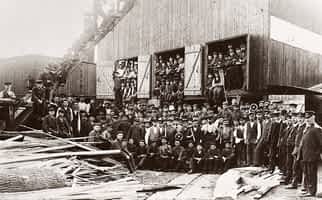
DONNERWETTER – remarkably fast
With a slimline forecastle and low water and air resistance, the successful racing speedboat DONNERWETTER, developed by Otto Lürßen, reaches a speed of nearly 35 knots with a 40-hp engine. This is a remarkable achievement for the time.

2nd Generation
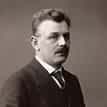
Otto Lürßen
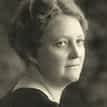
Frieda Lürßen
Otto Lürßen becomes a partner
Friedrich Lürßen’s only son Otto joins the firm as a partner, contributing far-reaching practical and theoretical knowledge. As a shipbuilding engineer he combines tried and trusted craftsmanship with new technical expertise, improving on past methods. This approach, handed down over the decades, remains to this day the essence of Lürssen’s unique quality and innovative spirit.
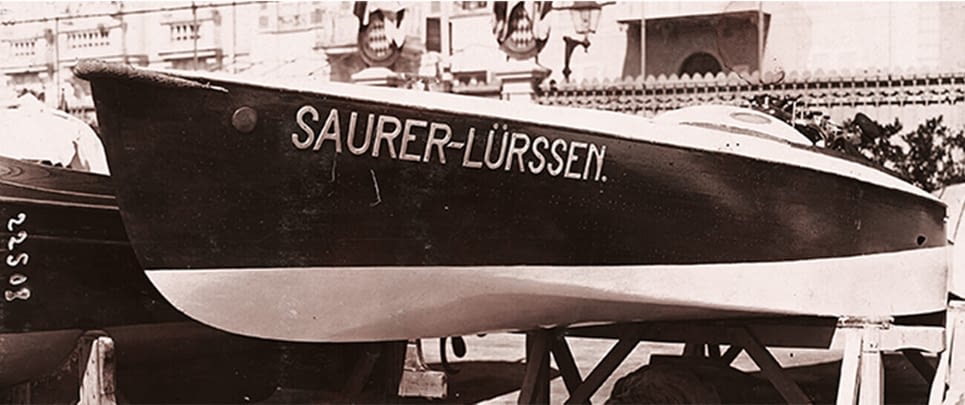
Lürssen-Daimler world champion
The LÜRSSEN-DAIMLER with a 102-hp engine is the sensation of the racing season. In the Mediterranean near Monaco, she wins the unofficial world championship, the Champion of the Sea. The speedboat goes on to win the Prix de la Côte d’Azur and the Grand Prix des Nations later in the same year. A further speedboat, the SAURER-LÜRSSEN, a joint project with Swiss engine manufacturer Adolf Saurer, sets another unofficial world record in the Prix de Monte Carlo with an average speed of 32 knots.
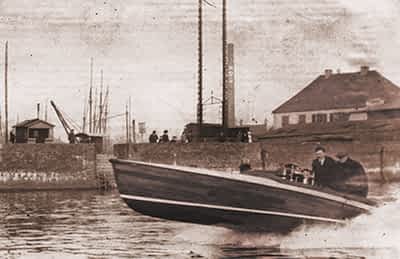
LÜRSSEN-DAIMLER
50th anniversary and 10,000th ship
Two milestones in one year: Lürssen builds its 10,000th vessel, a 14-meter wooden motor yacht, a sister ship of the ONKEL FIDI II. In addition, the company celebrates its 50th anniversary.
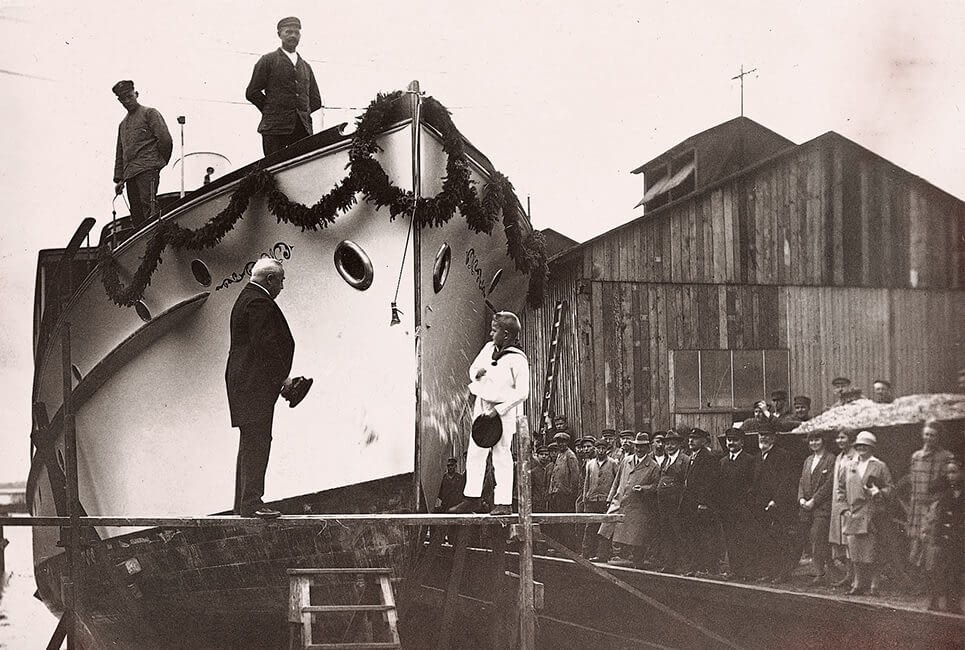
OHEKA II with MAYBACH engines sets a world record
Lürssen sets another new standard. With OHEKA II, equipped with three Maybach engines that propel her to a top speed of 34 knots, Lürssen builds the world’s fastest commuter yacht. Later the same year, the company builds the world’s longest motor yacht: the 36-meter AAR IV.
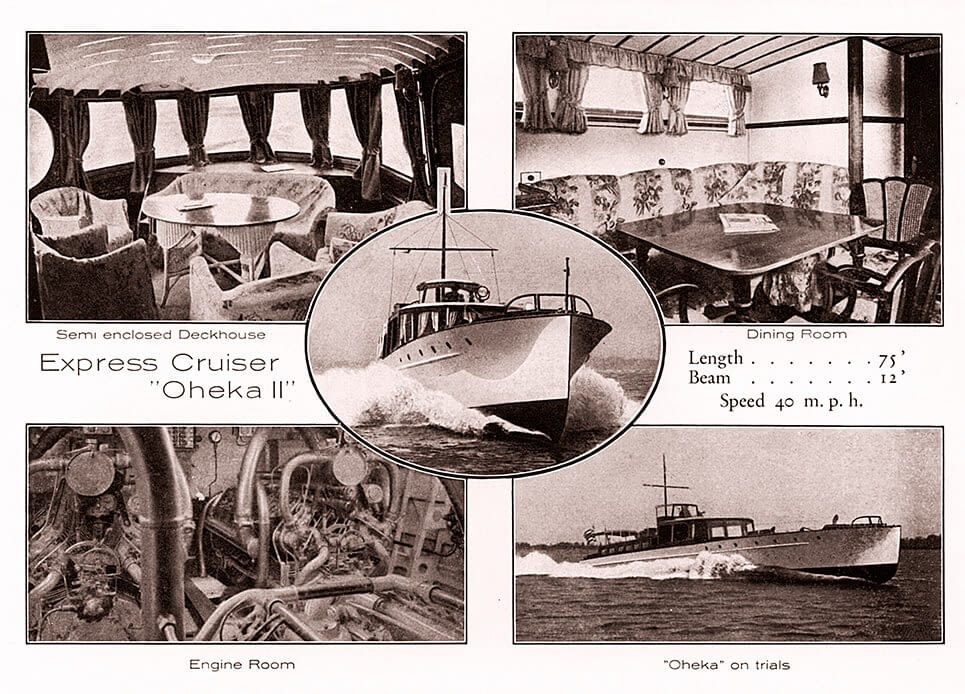
Frieda Lürßen takes charge
The abrupt death of 52-year-old Otto Lürßen, who directed the company in a spirit of open-mindedness and passion for innovation, is a bitter loss for the shipyard and the entire industry. His wife, Frieda Lürßen, the strong-willed daughter of a captain of a large cruise ship, fills the gap and takes over at the helm of the Lürssen yard.
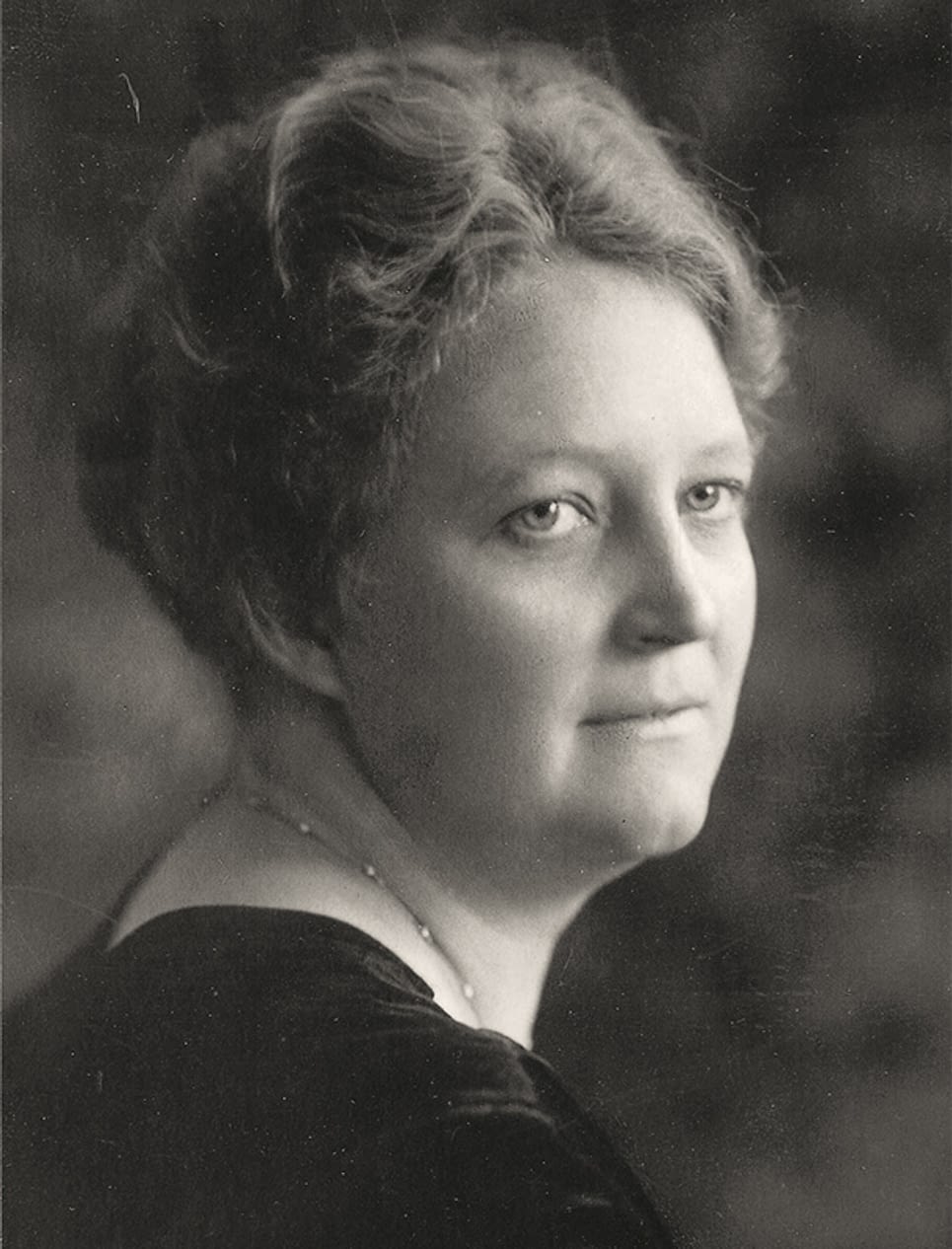
Gert Lürßen joins the company
The third generation takes on more responsibility at Lürssen: Gert Lürßen comes on board – bringing along the passion for motorboats he inherited from his father. In 1939, he sets an impressive world speed record on the lower reaches of the Weser River in a Lürssen diesel-powered speedboat, achieving a speed of exactly 68.2 km/h.

3rd Generation
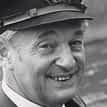
Gert Lürßen

Fritz-Otto Lürßen
New beginning: Gert and Fritz-Otto Lürßen
Business is difficult in the wake of the war. Everyone has to start from scratch and the Lürssen shipyard is no exception. During this time of change, the brothers Gert and Fritz-Otto Lürßen agree on the division of shares in company, which they hold from then on jointly with their mother Frieda Lürßen.
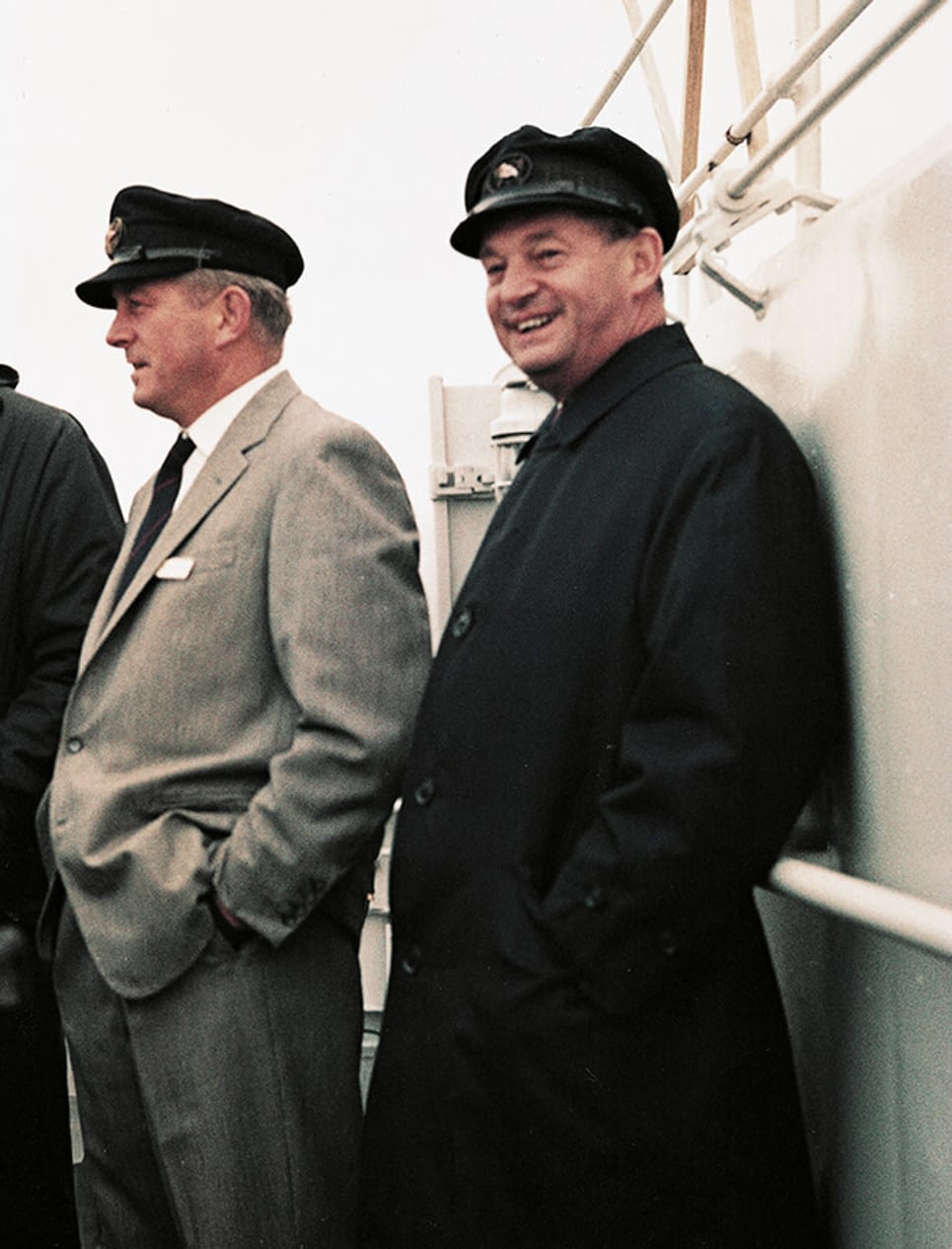
Third generation takes the helm
Frieda Lürßen, who has led the company with greater perseverance and technical expertise, hands over responsibility for the firm to her sons Gert and Fritz-Otto. That same year the 55-meter yacht PEGASUS II is delivered, like her predecessor, to a London shipowner.
CARINTHIA VI redefines yacht design
Her exterior design sets new worldwide standards: the yacht CARINTHIA VI is designed by Jon Bannenberg – his first major yacht project. To this day, the 71-meter vessel remains contemporary in styling, and she can be seen as the precursor of today’s Lürssen yachts.

Lürssen celebrates a century in business. Highlights include an exhibition illustrating the company’s varied history. Friedrich and Peter Lürßen, sons of owners Gert and Fritz-Otto Lürßen, receive their first shares in the firm.

4th Generation

Peter Lürßen
Friedrich Lürßen joins the company
At the age of 27, Friedrich Lürßen joins the company. After earning a degree in business administration and experience at various jobs in international companies, he starts to work his way through all departments of the shipyard. He soon assumes a senior position.
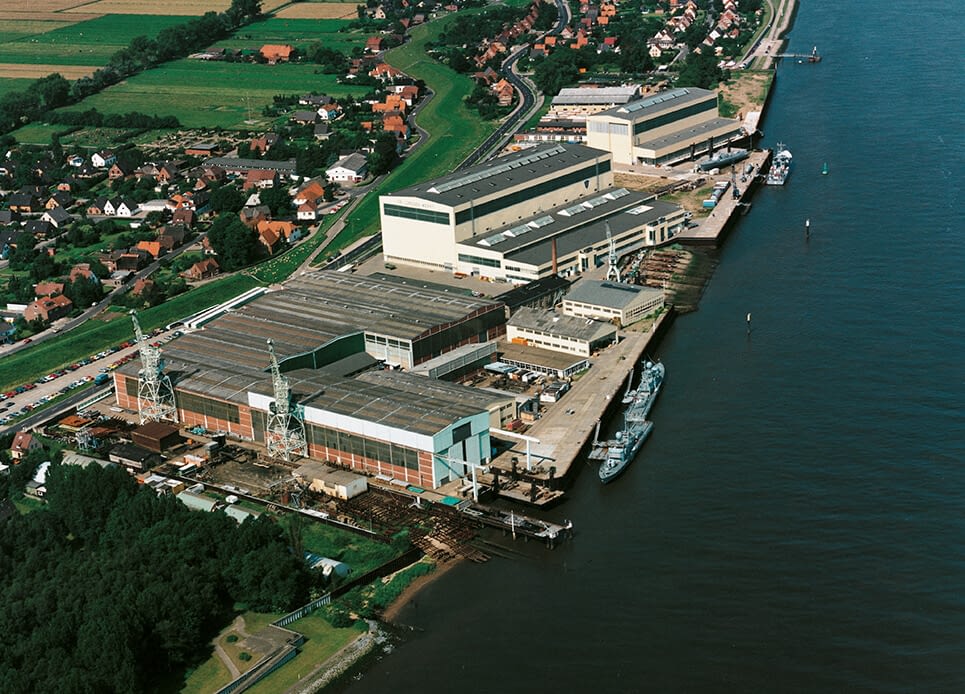
All production shifts to Lemwerder
A company on the move: in the winter of 1985/86, the last production facilities in Bremen Vegesack are torn down. The transfer of shipbuilding work to Lemwerder, which has been increasing since 1980, is completed.
Peter Lürßen joins the company
After studying shipbuilding and industrial engineering in Germany and business administration in the United States as well as gathering considerable professional experience, Peter Lürßen comes on board. In previous positions, he had spent a year as a construction inspector at different Japanese shipyards, and already familiarized himself with various Lürssen departments.

New shipyard acquired
With the takeover of the Kröger Werft, with docks on the Kiel Canal near Rendsburg, Lürssen gains a long-established shipyard that goes on to specialize in building yachts of between 60 and 110 meters in length. Yacht refits and conversions are also undertaken at this location.

New yacht division established
With Lürssen shipyards operating at 90 percent capacity with navy contracts, the company decides to split production between naval and yacht business. From now on, the company devotes half of its production capacity to building large yachts, in the process setting up a new yachtbuilding division dedicated to this market.

Limitless pushes the limits
The 97-meter megayacht LIMITLESS, designed by the highly regarded designer Jon Bannenberg, is handed over to her owner.
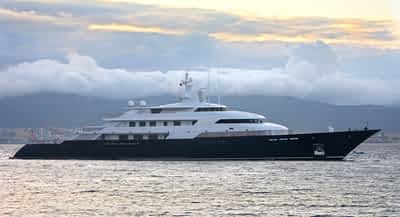
Jubilee: 125 years since founding
One-and-a-quarter centuries after its founding by Friedrich Lürßen, the company celebrates an important anniversary. The small boatbuilding company on the Weser River has grown into a large shipyard that builds military vessels as well as modern megayachts.

Acquisition of Neue Jadewerft
Lürssen purchases the Neue Jadewerft shipyard in Wilhelmshaven on the German North Sea coast. It is specialized in naval vessels and also in maintenance, repair and conversion work on ships up to 150 meters in length.
Norderwerft shipyard acquired
The Norderwerft shipyard in Hamburg becomes part of the Lürssen Group in October 2012. Its main business is repair and maintenance of commercial shipping vessels as well as ship maintenance for the German Navy.
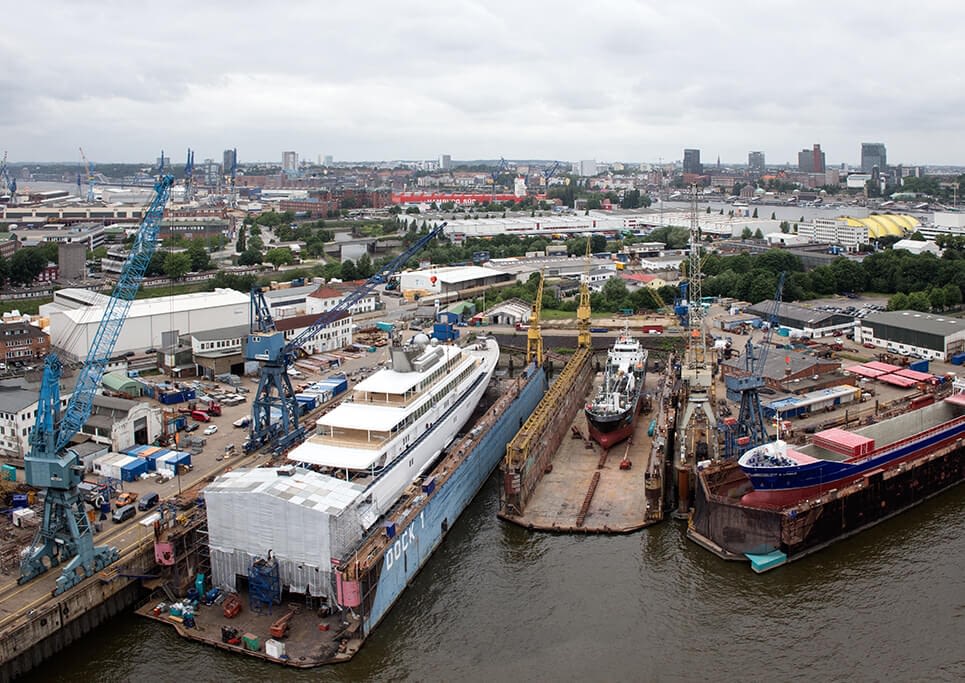
Acquisition of Peene Werft
In May 2013, Lürssen purchases Peene Werft shipyard in Wolgast, Germany. The facility provides newbuild and repair services for naval vessels as well as yachtbuilding.

The longest yacht in the world
Lürssen delivers the world’s longest yacht, AZZAM, at 180.65 meters. She not only sets a record for length and speed exceeding 30 knots, but also for her building time of less than three years.

The biggest yacht in the world
DILBAR, the largest motor yacht the ever in terms of gross tonnage, leaves Lürssen shipyards. At 156 meters and loaded with highly sophisticated technology, she is one of the most complex and challenging yachts ever built. The 15,917-ton vessel features luxury entertainment and recreation spaces never before seen on a yacht. The impressive project was completed in just 52 months.

ACQUISITION OF BLOHM+VOSS SHIPYARD
The Hamburg shipyard Blohm+Voss becomes part of the Lürssen Group in 2016. Capacities will be expanded as a result. The yacht refit activities are concentrated at the Hamburg site.
Driving directions
The route deemed to be the safest and simplest with minimal scope for error along the way. The default recommended route from Michelin.
The route offering the shortest distance to a destination via the most accessible roads. Journey times for this option will tend to be longer.
The most fuel-efficient route that also avoids toll roads.
My cost options
- B7 (Diesel)
- E5 (Unleaded)
- E85 (superethanol)
- CNG (Biomethane)
- H2 (Hydrogen)
My route options
- E5 (Unleaded) €1.700
- Route : Fast
- Distance in : Kilometres
- No restrictions
Services at Lobnya
- Route from this place
- Directions to this place
- Route via this place
- Nearby hotels
- Nearby restaurants
Alternative travel
Arrive at lobnya organise your trip, accommodation, other services, restaurants at lobnya.
- See restaurants from the Michelin selection
Tourist Attractions at Lobnya
- View the must-see tourist sites
Renting a car, an attractive proposition for the holidays

Monthly Report

Eco-mobility

Keep in contact
My michelin account.
Work in progress.

IMAGES
COMMENTS
That said, Dodge was cognizant of the view that Motor boating, at that time, was considered part of the lifestyle of the affluent. Horace E. Dodge Boat and Motor Company began an bold venture in the 1930's and set off to build the largest and best equipped Boat factory in the World, located on the waterfront in Newport News, Virginia.
The 48-foot 1930 Chris-Craft Commuter, the first of five models built and one of only two known to exist, is now ready for its next captain. The luxurious wooden vessel—fully restored and offered for $649,000 through Antique Boat America —was created as a prototype and given the name Allez ("Go" in French) by Chris-Craft founder ...
Antique and Classic boats pricing. Antique and Classic boats listed for sale on YachtWorld offers a diverse price range, from $5,170 on the relatively more affordable end to a staggering $7,728,105 for the most unique, one-of-a-kind yachts available. It is advisable to bear in mind the expenditure involved in ownership while contemplating your ...
The all-important restoration project was granted to London-based design firm Muza Lab which set about "re-awakening" her 1930s spirit. The project took two years to complete and was finalised ...
Johnson Motor Co. would be absorbed by OMC in 1936. Mercury Marine was born in the 1930s when Carl Kiekhaefer started the Kiekhafer Corp. in Cedarburg, Wis., in 1939. The 1930s also saw the first boat shows in Los Angeles, Chicago and Dallas, to name just a few cities.
Year: 1930. Manufacturer: David Jones Yacht Brokerage. Price: EUR 5,500,000. (US$7,739,050) This Classic motor yacht MASCALZONE ASSAI was designed by G.L. Watson and built in 1930 by William Beardmore in Glasgow. This vessel was been refitted between 2002 and 2003. Her interior is wonderfully sophisticated and elegant, the staterooms are ...
In 1903, the world came together for the first international motorboat race of its kind, the Harmsworth Cup, formally known as the British International Trophy for Motorboats. An Englishman won, racing his motorboat at a speed of 19.5 miles per hour. ... 1920S AND 1930S — BOATING INDUSTRY BEGINS TO ORGANIZE.
Business & Finance: 1930 Motorboats Monday, Jan. 27, 1930 Subscriber content preview. or Log-In Share Facebook Twitter Tumblr ... But unusual is the sight that Manhattanites had last week a tarpaulin-covered motorboat left all night on a truck at a Park Avenue corner. Many another night and all day many another glistening, rivet-new motorboat ...
Plan on MOTOR BOATING. Slip your land moorings for the keen pleasures and sea-free thrills of fast, luxurious motor boating. You'll find it the greatest companion sport to motoring—a sport even more thrilling In mastery. And in a DART Runabout motor boating has that doubled enjoyment that fine car performance gives to motoring.
III. Construction of the Hull—A Suggested Design. By R. R. POOLE, B.Sc. The construction of speed boat hulls of the 1½-litre class is generally rather beyond the capabilities of the amateur, unless special facilities are available, but the smaller hulls, such as are required for outboard engines and inboards of the nominal 7 or 8 h.p. class ...
There are a wide range of Antique and Classic (Power) boats for sale from popular brands like Chris-Craft, Custom and Century with 133 new and 841 used and an average price of $78,664 with boats ranging from as little as $2,543 and $4,930,242. View a wide selection of antique and classic (power) boats for sale in your area, explore detailed ...
This maritime striving, according to author Ross MacTaggart, spawned a century's worth of high-profile boats. The wave began in 1830, he notes, with an Englishman who commissioned the first known motor yacht: the steam-driven Menai, complete with paddle wheels that made her look like a hybrid of a submarine and a Mississippi riverboat.. While the design may have seemed maladroit, the outcome ...
(More details) It was renamed Motor Boating and Sailing in 1970, and MotorBoating in 2000. It ceased publication in 2011. Persistent Archives of Complete Issues. 1908-2011: Google Books has most of this magazine's run, by arrangement with the publisher.
Later the same year, the company builds the world's longest motor yacht: the 36-meter AAR IV. 1930. 1932. Frieda Lürßen takes charge. The abrupt death of 52-year-old Otto Lürßen, who directed the company in a spirit of open-mindedness and passion for innovation, is a bitter loss for the shipyard and the entire industry. His wife, Frieda ...
heres a real old all original Small champion outboard up and running after a basic tune up! still running strong Stay tuned folks more Old motor finds coming...
Description. 1931 Classic Frank Anderson Motor Yacht. SHELL-FISH is a vessel like no other. She was commissioned as a shellfish research vessel by the state of Connecticut and launched in 1931. In the 1960's she was purchased for recreational use and converted to a cruiser. Her heavy frame construction for commercial use is what kept her afloat ...
The first fast motor lifeboat to arrive at the newly reopened Dover Lifeboat Station in 1930 was one of a kind. Designed to reach casualties rapidly, Sir William Hillary - named after the RNLI's founder - was in response to an increasing number of aircraft flying over the Channel, and coming down at sea. Built by Thornycroft at Platt's Eyot, Hampton-on-Thames, and moored afloat, the ...
I saw this 1936 Evinrude Motorized Bicycle at the Riverside Hotel & Casino in Laughlin NV. It's the most unusual motorized bicycle I've ever seen. They're ...
MotorBoating is a monthly magazine that covers all aspects of boating, from sailing to powerboats, from racing to cruising. In this issue, you can find articles on the latest models, tips on maintenance, stories of adventure, and more. Whether you are a novice or a veteran, MotorBoating will inspire you to enjoy the water. Read it online or download it to your device with Google Books.
Aeroexpress Ltd. (Russian: ООО "Аэроэкспресс") is the operator of airport rail link services in Russia.It is founded in 2005 and is owned by Russian Railways (50%), TransGroup AS (25%), Iskander Makhmudov (17.5%), and Andrei Bokarev (7.5%). Until 2012, the company only provided the rail transportation services between Moscow rail terminals and Moscow airports (Sheremetyevo ...
30 Nov 1941. Atlantic Ocean. Whitley bombers of No. 502 Squadron RAF based in Northern Ireland, United Kingdom attacked German submarines U-71 and U-563 with depth charges in the Atlantic Ocean, damaging U-71. This attack marked the first successful use of air-to-surface vessel radar. ww2dbase.
Drive • 44 min. Drive from Moscow Paveletsky Station to Lobnya 45 km. RUB 330 - RUB 490. Quickest way to get there Cheapest option Distance between.
Restaurants. Moscow Lobnya driving directions. Distance, cost (tolls, fuel, cost per passenger) and journey time, based on traffic conditions.